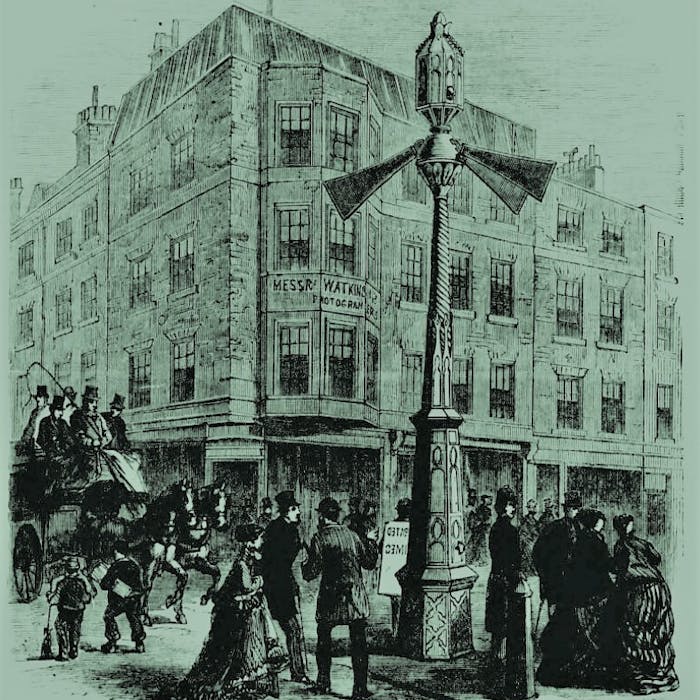
The invention of traffic lights - but a long delay followed
The official birth date of the traffic light was 10th December 1868, where an installation was made at Parliament Square in London. The concept was invented by John Peake Knight – a railway manager from Nottingham – in response to numerous traffic accidents in the capital.
It's surprising to learn that the much-maligned traffic light pre-dates the arrival of the car, but some kind of traffic control became desirable in London in the Victorian era. In 1866, for instance, 1102 people were killed and 1334 injured on the city’s roads, well before the invention of motorised vehicles.
Peake Knight proposed a signalling system to regulate the horse-drawn traffic, and to reduce the number of accidents.
The system was based on the 'semaphore' signalling used on the railways, with the arms operated by a policeman during the day, and by red and green gas-fuelled lamps at night. These were constructed as two mobile signs attached to pivoting arms that were manipulated by a lever, with the gas-lit semaphore on top.
However, less than two months after it was installed, a gas leak caused one of the lights to explode – injuring the policeman who was operating it. As a result, the system fell out of favour, and traffic lights did not return to the UK until 1929, when electric signals were introduced in London.
In the meantime, between the 1860's and the introduction of traffic lights of the kind we know today, most traffic at busy junctions was controlled by policemen performing what was known as 'point duty', and standing in the middle of the road on a plinth beckoning traffic from one direction and signalling 'stop' to the others with their arms wearing special white armbands.
At some junctions, roundabouts were eventually introduced - but that's another story!
Further reading
Links to external websites are not maintained by Bite Sized Britain. They are provided to give users access to additional information. Bite Sized Britain is not responsible for the content of these external websites.
